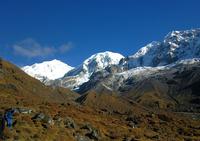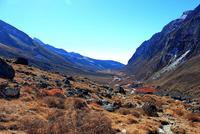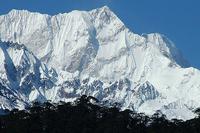You are in: Asia -> India -> Khangchendzonga Nati... , and traditional search or Image Gallery will yield results of this site only
Khangchendzonga National Park
| Site number: | 1513 |
|
| Type of site: | Mixed | |
| Date of Inscription: | 2016 | |
| Location: | Asia, India, Sikkim, Khangchendzonga National Park | |
Up to 75 images are shown here. Click on each for more details or on Image Gallery for more images.
Six official UN languages:
Arabic,
English,
French,
Russian,
Spanish
Other languages: Croatian, Dutch, Finnish (suomi), Georgian, German, Malayalamn, Norwegian-nynorsk, Portuguese, Tamil, Ukrainian, Vietnamese
Other languages: Croatian, Dutch, Finnish (suomi), Georgian, German, Malayalamn, Norwegian-nynorsk, Portuguese, Tamil, Ukrainian, Vietnamese
| Description: | Located at the heart of the Himalayan range in northern India (State of Sikkim), the Khangchendzonga National Park includes a unique diversity of plains, valleys, lakes, glaciers and spectacular, snow-capped mountains covered with ancient forests, including the world’s third highest peak, Mount Khangchendzonga. Mythological stories are associated with this mountain and with a great number of natural elements (caves, rivers, lakes, etc.) that are the object of worship by the indigenous people of Sikkim. The sacred meanings of these stories and practices have been integrated with Buddhist beliefs and constitute the basis for Sikkimese identity. --WHMNet's description is from WHC Site, where additional information is available. | |
| Khangchendzonga National Park (previously named Kanchenjunga National Park) also Kanchenjunga Biosphere Reserve is a National Park and a Biosphere reserve located in Sikkim, India. It was inscribed to the UNESCO World Heritage Sites list on July 17, 2016, becoming the first "Mixed Heritage" site of India. The park gets its name from the mountain Kanchenjunga (alternative spelling Khangchendzonga) which is 8,586 metres (28,169 ft) tall, the third-highest peak in the world. The total area of this park is 849.5 km2 (328.0 sq mi). There are many glaciers in the park including the Zemu glacier. Animals like musk deer, snow leopard, Clouded Leopard[better source needed], and Himalayan tahr all make their home in this park. --Wikipedia. Text is available under the Creative Commons Attribution-ShareAlike License. | ||
| Source: | http://whc.unesco.org/en/list/1513 | |
| Source2: | Wikipedia (http://wikipedia.com) | |
| Reference: | 1. UNESCO World Heritage Center (http://whc.unesco.org/en/list/1513). 2. Wikipedia. | |










